Le ciel est joli comme un ange
27th January - 24th February 2024

Double-faced synthetic fabric
175 x 286 cm
Marion Baruch has, for the past ten years, been intervening on fabric offcuts retrieved from the textile industry in Milan. The artist selects, sorts and arrange those materials, so as to transform those disregarded scraps from the industrial and urban society into forms characterised by a flexible geometry. Hung from the ceiling or pinned on the wall, her works reflect a history, as social and political as individual and sensitive.
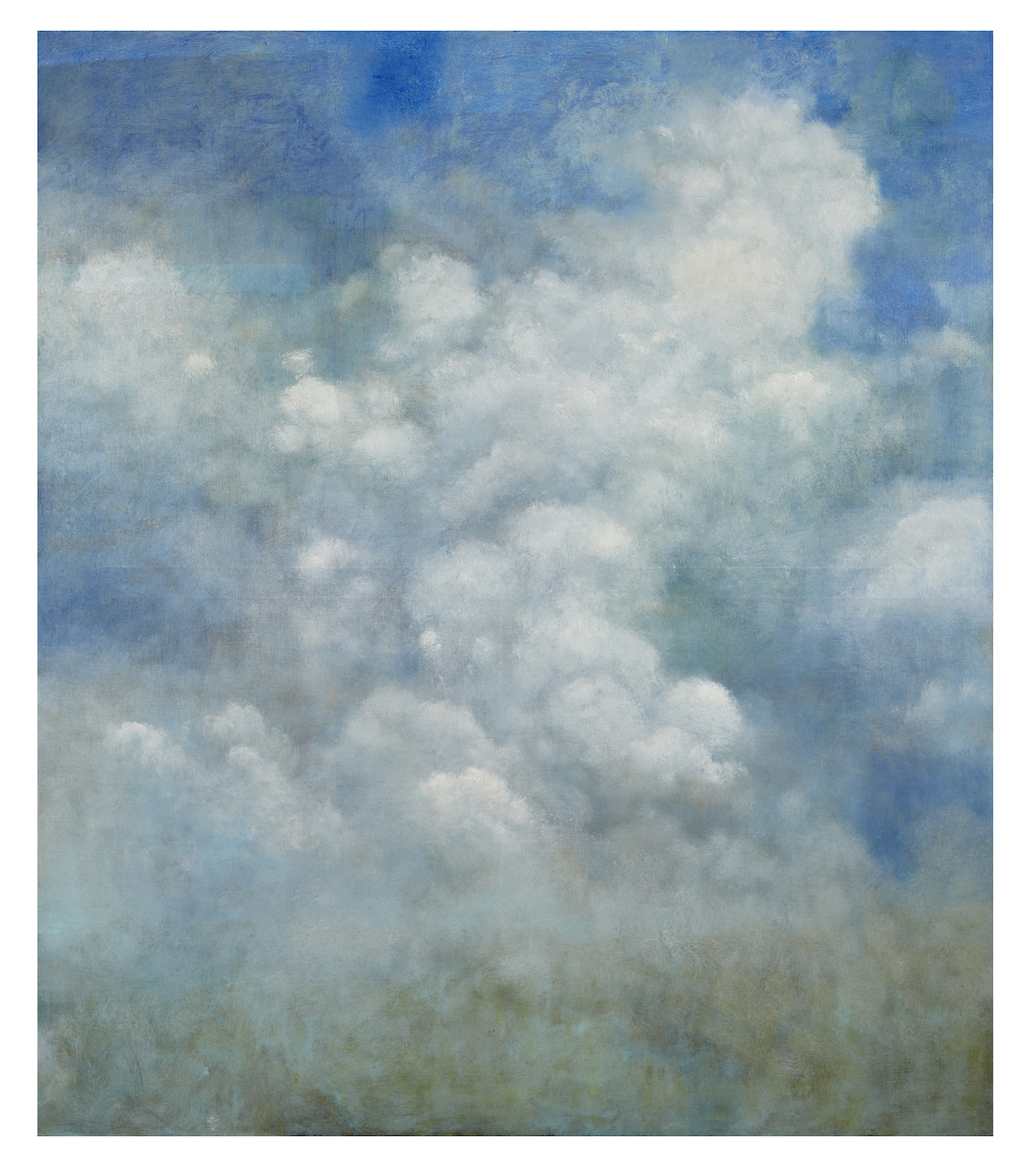
150 x 130 cm
Signed, titled and dated at the back

85 x 63 cm
Signed, bottom right
©Fred Froum / La Nouvelle Babylone
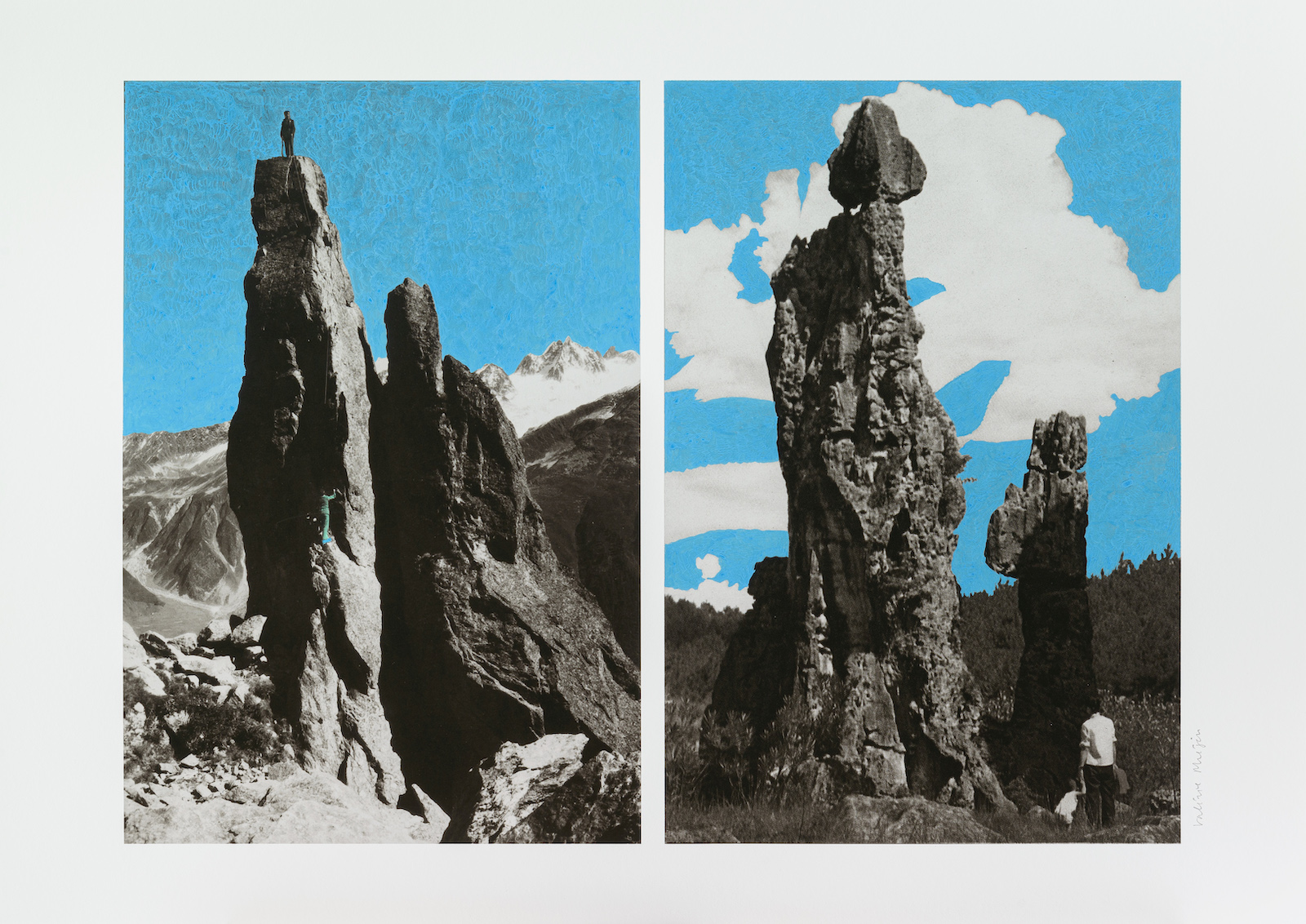
42 x 59 cm
Signed
© Grégory Copitet
" Un couloir creusé dans la roche. Avant, on pouvait l'escalader à mains nues. Il y a une échelle de corde mais un jeune homme l'a déjà empruntée et elle se balance au-dessus du vide sans que je puisse la saisir. "
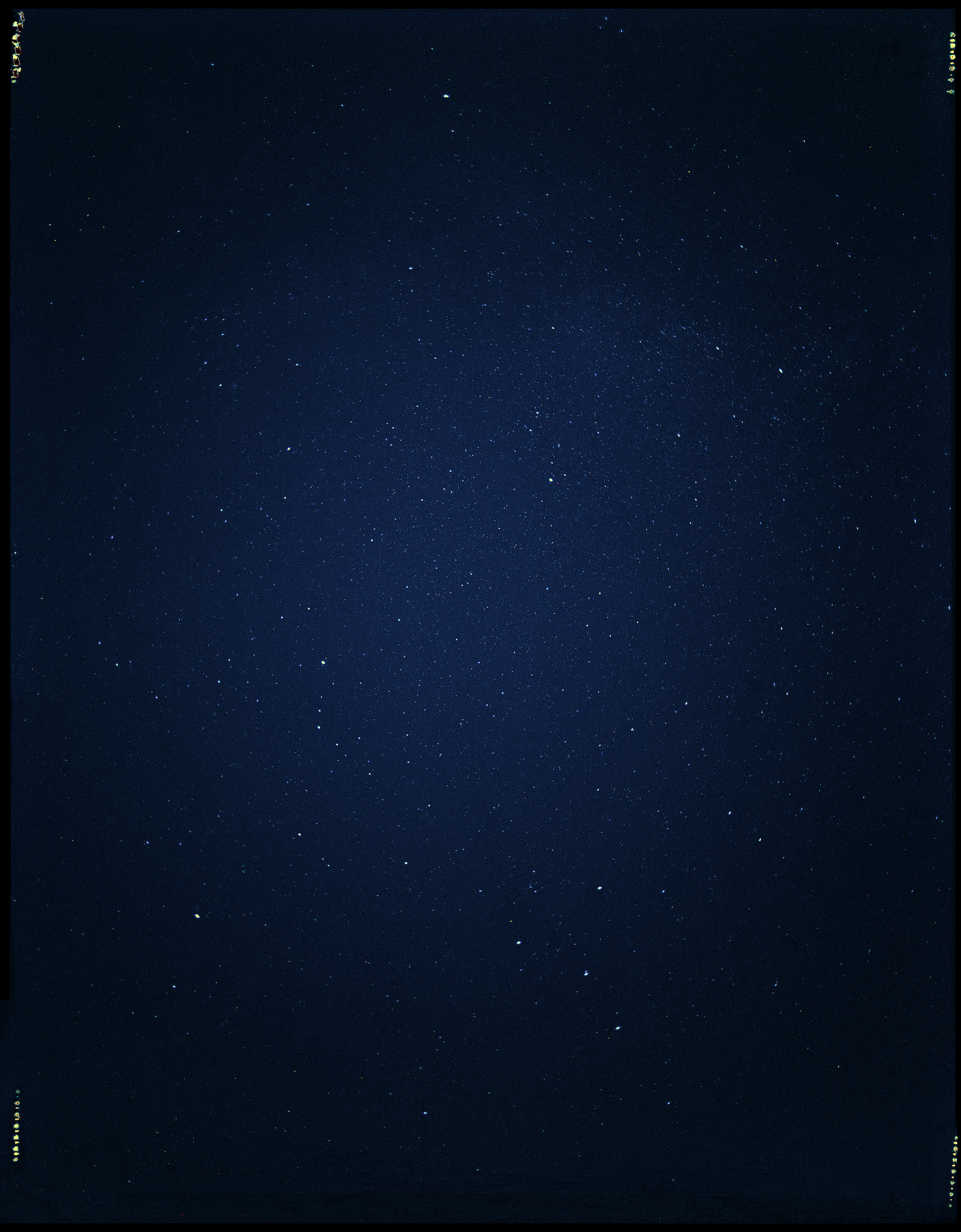
Image: 130 x 105 cm
Frame: 134 x 109 cm
It was in the night of Elea, an ancient Greek city near Naples, that Parmenides
first assumed that the Moon reflected the light of the Sun or that the Earth was a
sphere. By seeking out the logic at work in nature through his observations rather
than mythological accounts, he and other pre-Socratic philosophers helped to build
a new way of understanding the world.
This photograph of the sky over Elea was taken almost 2,500 years after Parme-
nides, by attaching a camera to a motor synchronised with the Earth's rotation,
which made it possible to follow the course of the stars and produce a perfectly
fixed image of the celestial vault.
Usually, no matter where in the world they are taken, photographs capture the
light of the Sun reflected on the world around us. However, in this photograph, the
light captured does not come from our Sun, but from thousands of distant suns.
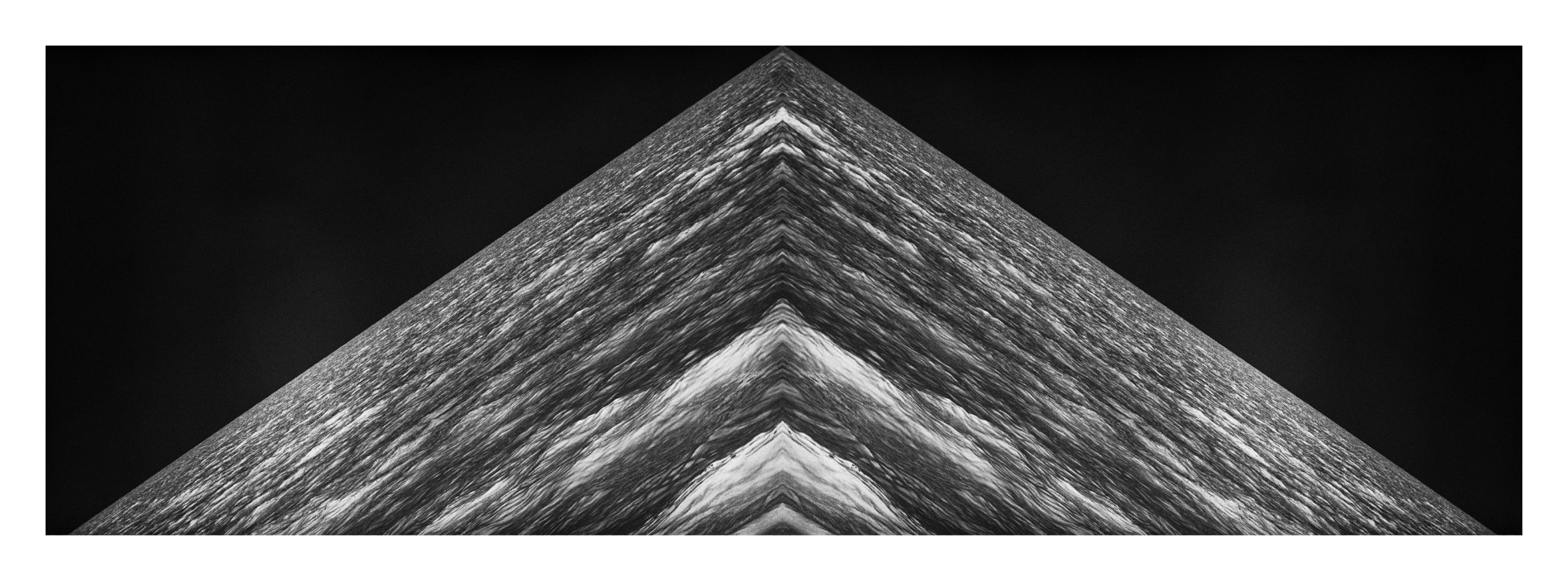
Image: 30 x 90 cm
Paper: 42 x 102 cm
Broken Horizon is part of a research on the perception of reality. The landscape, located in a minimalist universe on the Black Sea, becomes a space of projection of a state of crisis. It represents a feeling of failure, the horizon of all expectations is closed on itself, it breaks, like a "liquid Ararat of isolation."
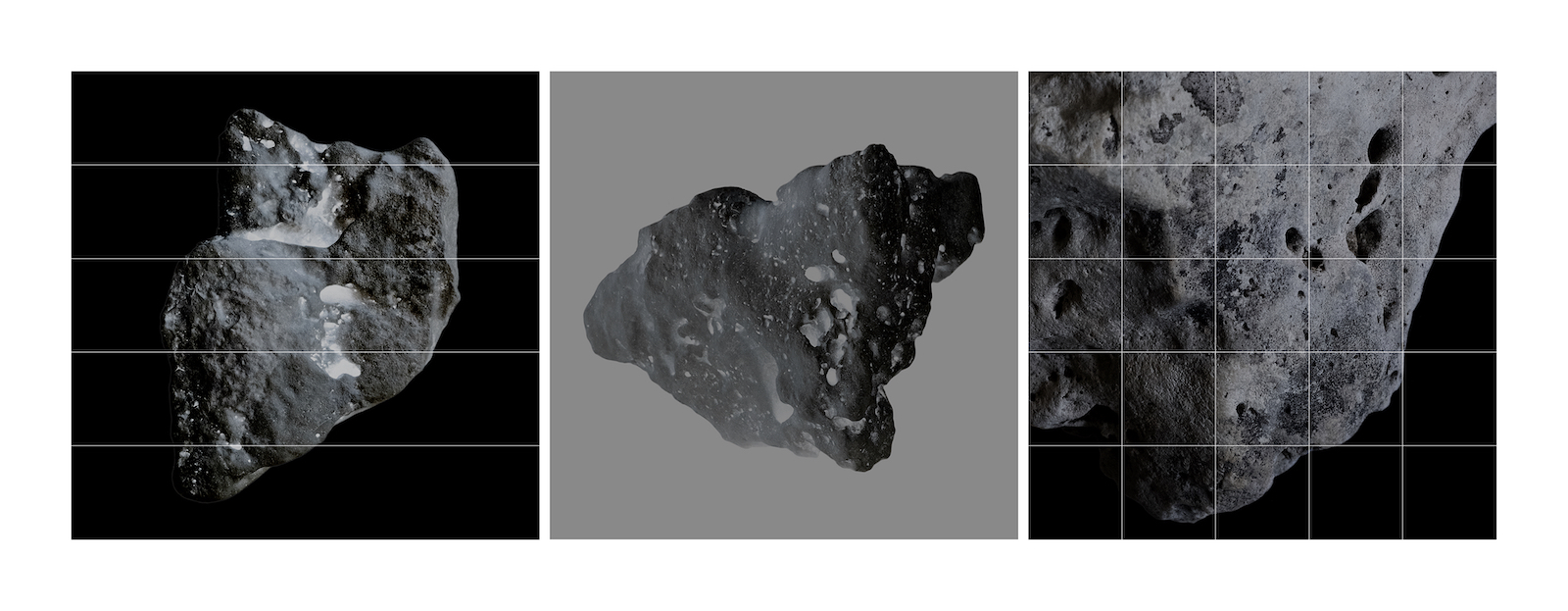
Paper: 47,5 x 121 cm
Frame: 50 x 123,5 cm
The Thing #1 émane des recherches de Decebal Scriba sur la nature de la matière et de son intérêt pour la physique et l'espace. À partir de photographies de pierres, l'artiste manipule l'image en convoquant une esthétique scientifique et projette un objet terrestre commun dans l'espace, de sorte à suggérer des astéroïdes étranges.
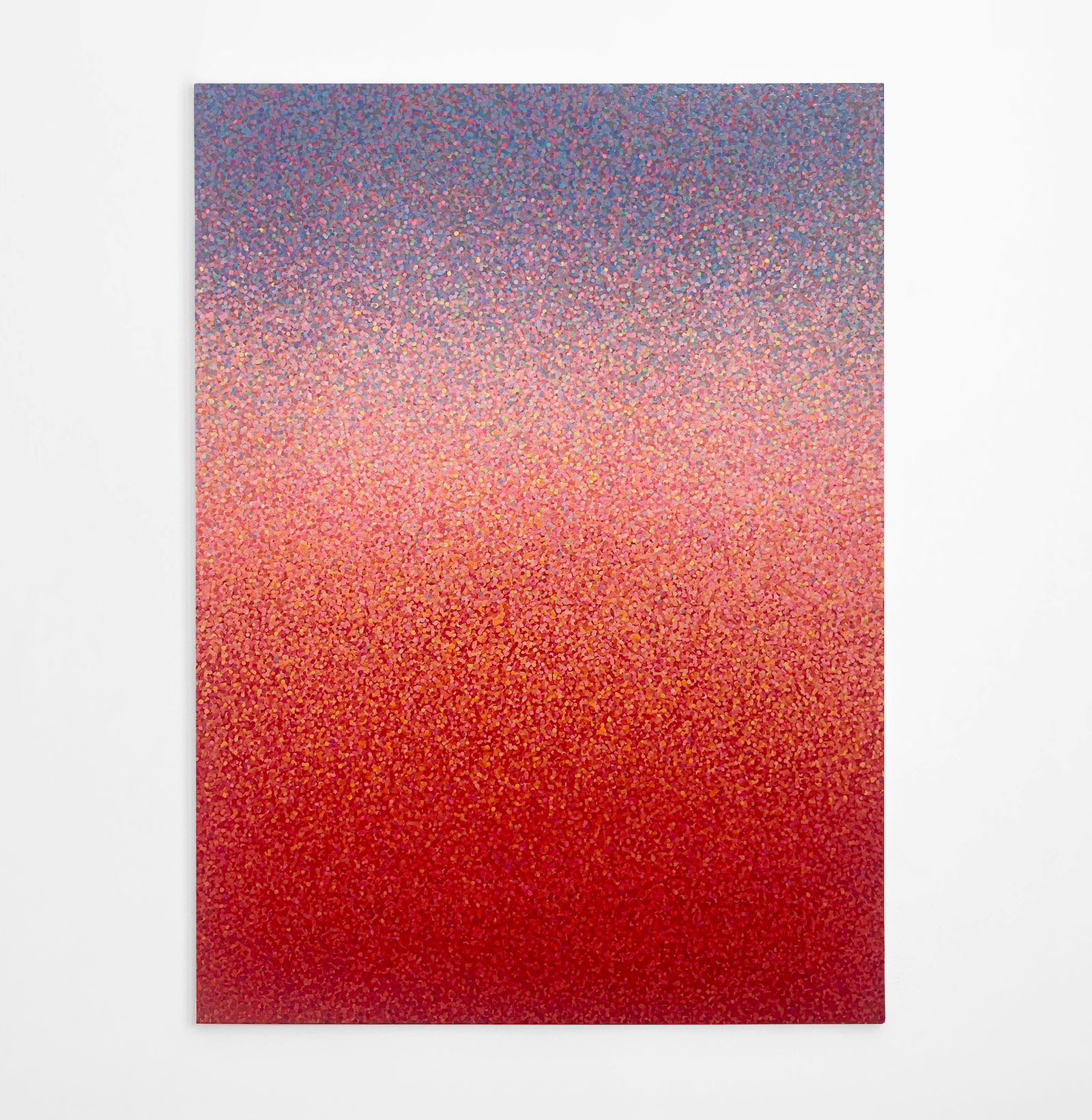
156 x 117 cm
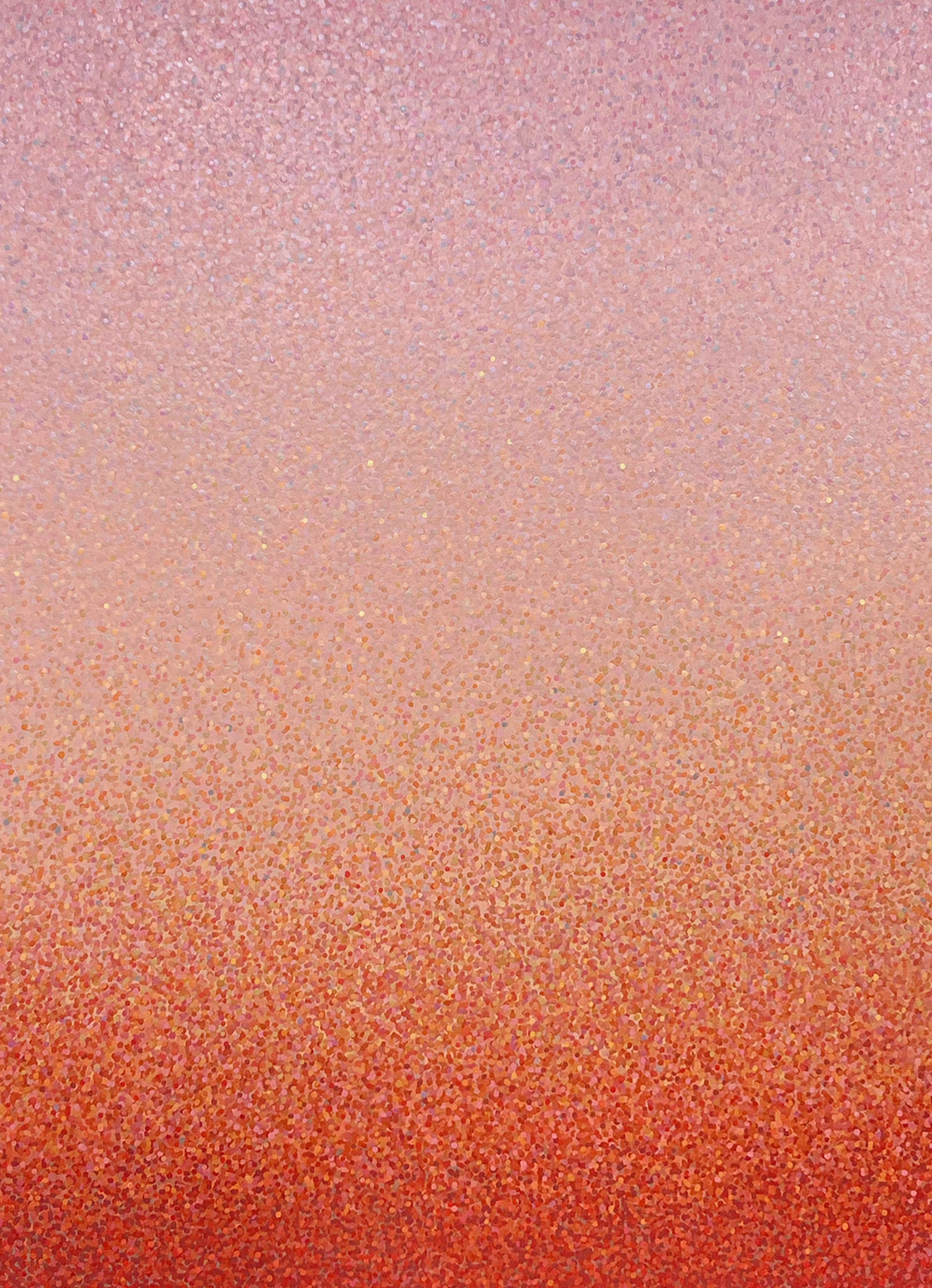
156 x 118 cm
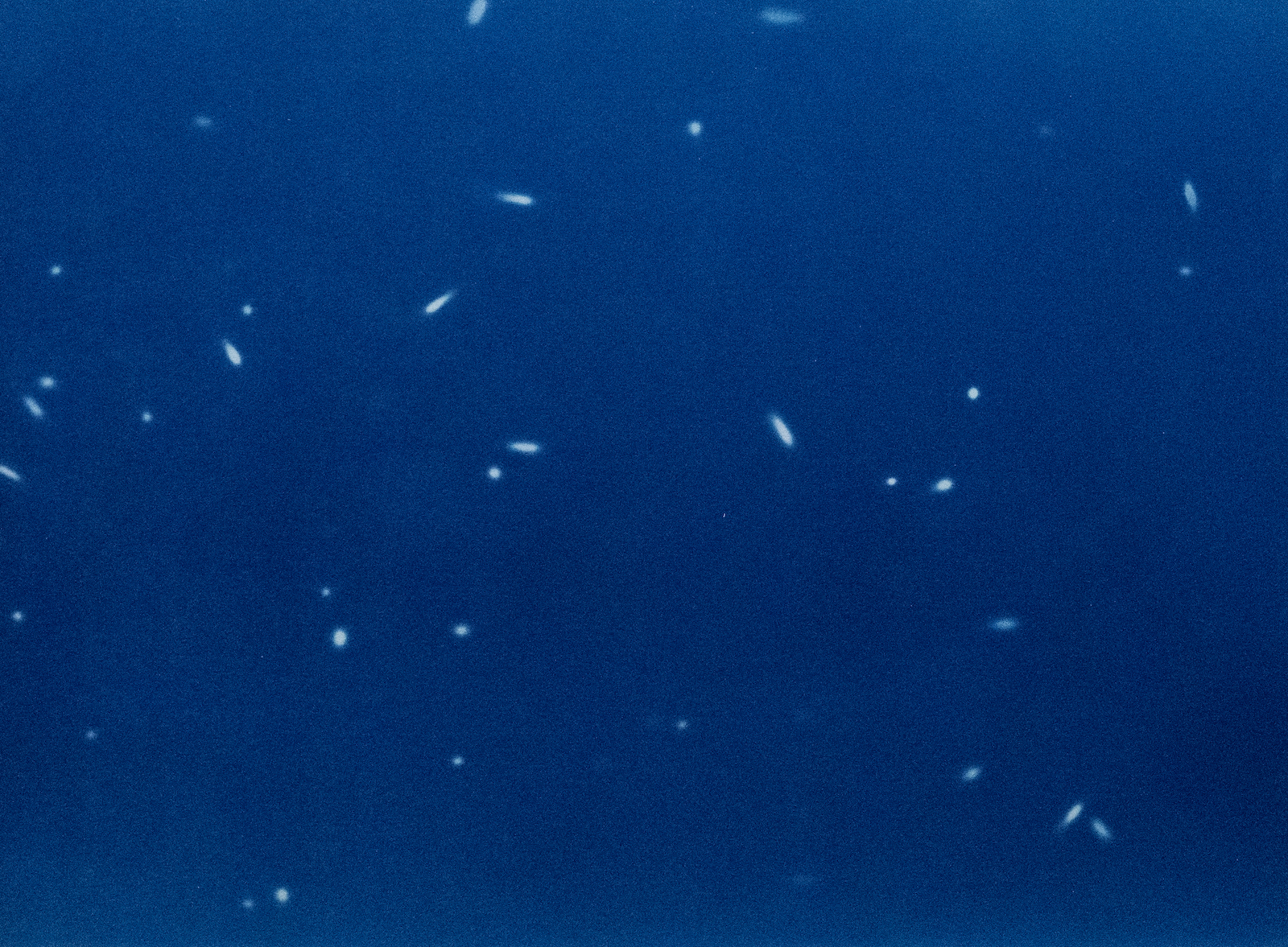
Image: 39 x 53 cm
Frame: 40 x 54 cm
Signed, titled, dated at the back
Dans cette série, on distingue une multitude de points lumineux répartis dans l'espace comme les constellations d'un ciel étoilé. Ces sources de lumière sont pourtant bien plus proches de nous, sur terre. Il s'agit de la signature thermique des abeilles. La chaleur qu'elles émettent rayonne en lumière infrarouge et est ensuite capturée par une caméra thermique. En utilisant la technique du cyanotype mise au point par l'astronome William Herschel en 1842 pour imprimer ces photos, la lumière invisible de la chaleur des abeilles est rendue visible par la lumière du jour, nécessaire au cyanotype pour se révéler.
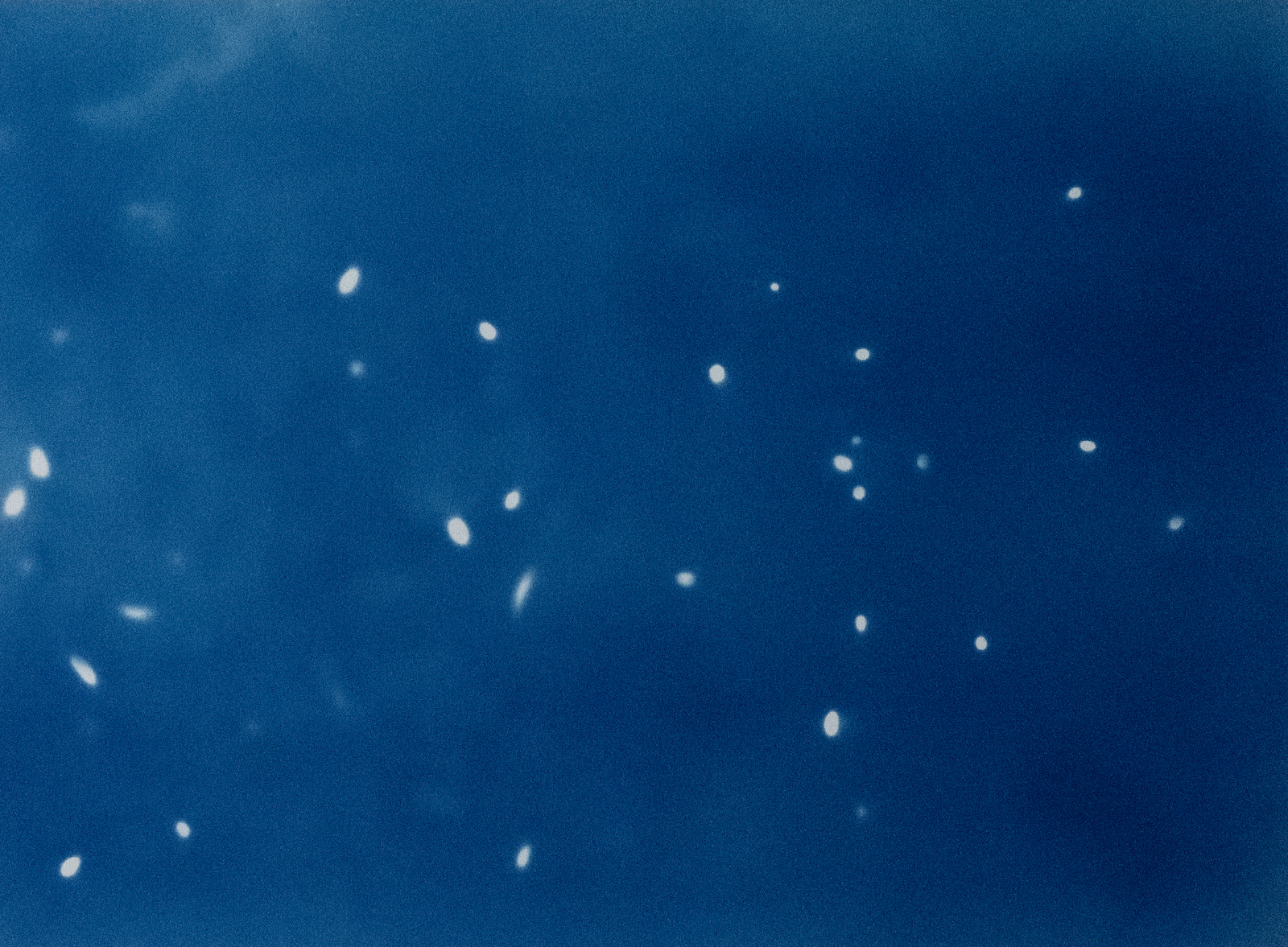
Image: 39 x 53 cm
Frame: 40 x 54 cm
Signed, titled, dated at the back
Dans cette série, on distingue une multitude de points lumineux répartis dans l'espace comme les constellations d'un ciel étoilé. Ces sources de lumière sont pourtant bien plus proches de nous, sur terre. Il s'agit de la signature thermique des abeilles. La chaleur qu'elles émettent rayonne en lumière infrarouge et est ensuite capturée par une caméra thermique. En utilisant la technique du cyanotype mise au point par l'astronome William Herschel en 1842 pour imprimer ces photos, la lumière invisible de la chaleur des abeilles est rendue visible par la lumière du jour, nécessaire au cyanotype pour se révéler.
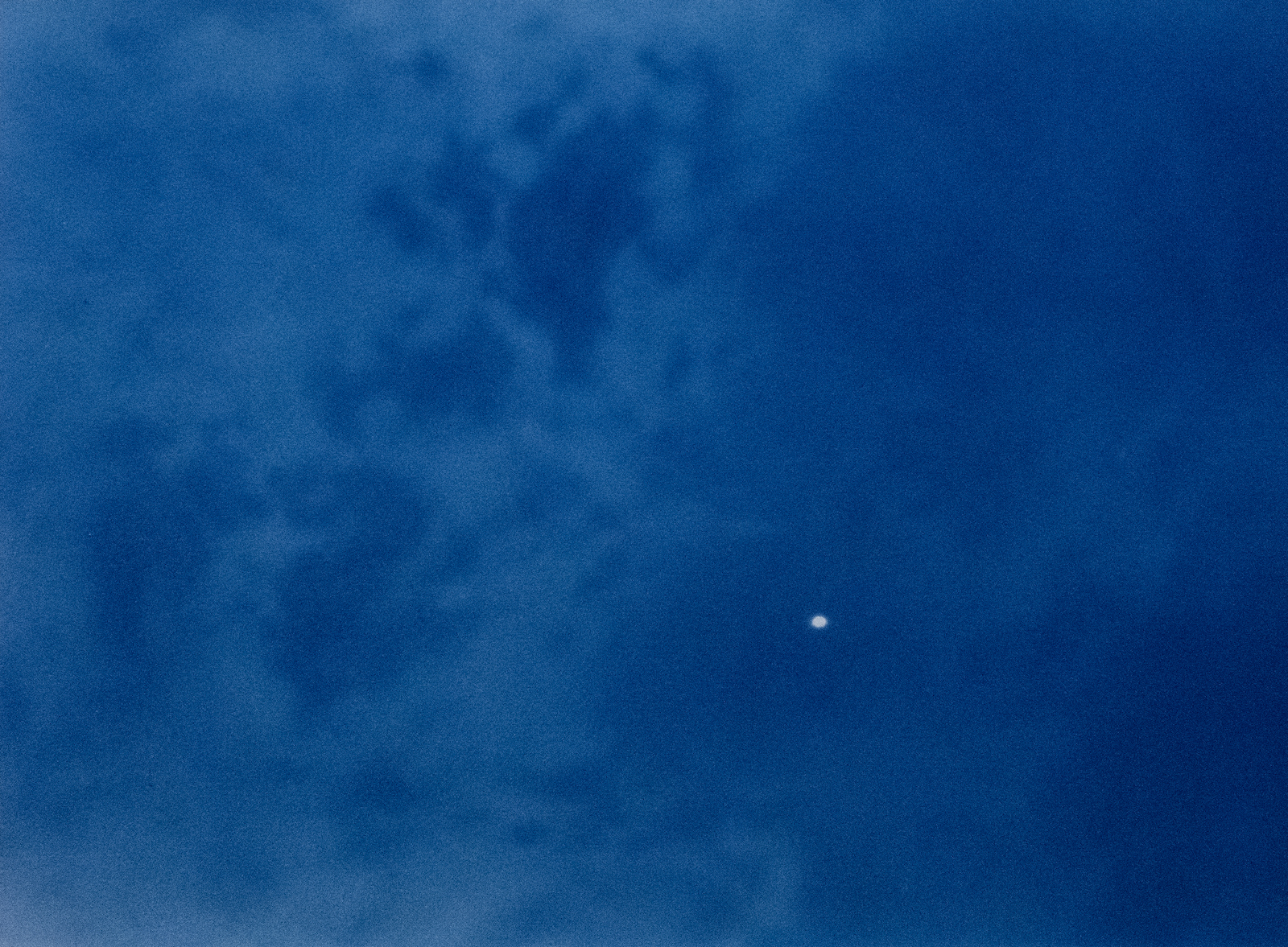
Image: 39 x 53 cm
Frame: 40 x 54 cm
Signed, titled, dated at the back
Dans cette série, on distingue une multitude de points lumineux répartis dans l'espace comme les constellations d'un ciel étoilé. Ces sources de lumière sont pourtant bien plus proches de nous, sur terre. Il s'agit de la signature thermique des abeilles. La chaleur qu'elles émettent rayonne en lumière infrarouge et est ensuite capturée par une caméra thermique. En utilisant la technique du cyanotype mise au point par l'astronome William Herschel en 1842 pour imprimer ces photos, la lumière invisible de la chaleur des abeilles est rendue visible par la lumière du jour, nécessaire au cyanotype pour se révéler.
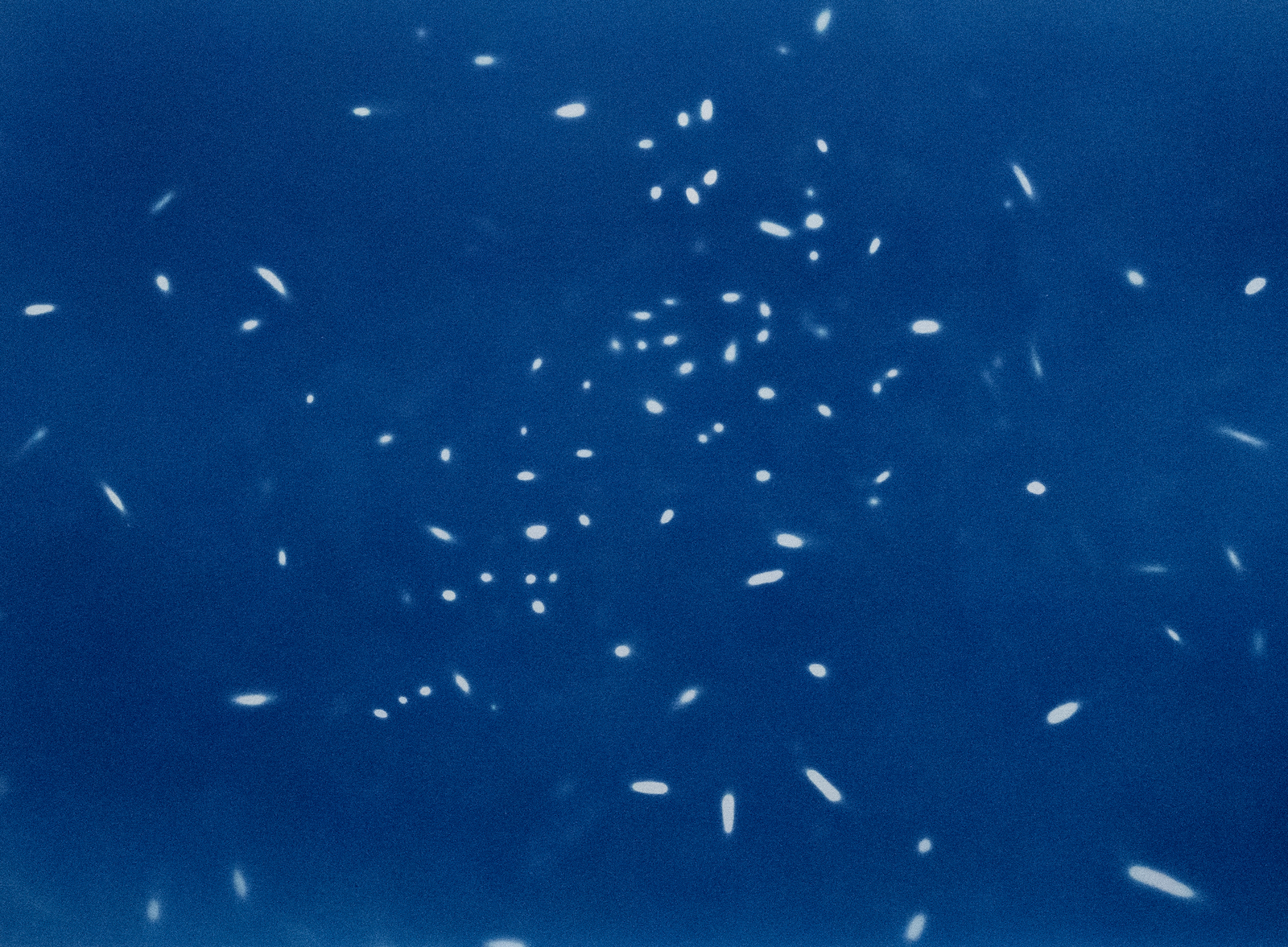
Image: 39 x 53 cm
Frame: 40 x 54 cm
Signed, titled, dated at the back
Dans cette série, on distingue une multitude de points lumineux répartis dans l'espace comme les constellations d'un ciel étoilé. Ces sources de lumière sont pourtant bien plus proches de nous, sur terre. Il s'agit de la signature thermique des abeilles. La chaleur qu'elles émettent rayonne en lumière infrarouge et est ensuite capturée par une caméra thermique. En utilisant la technique du cyanotype mise au point par l'astronome William Herschel en 1842 pour imprimer ces photos, la lumière invisible de la chaleur des abeilles est rendue visible par la lumière du jour, nécessaire au cyanotype pour se révéler.
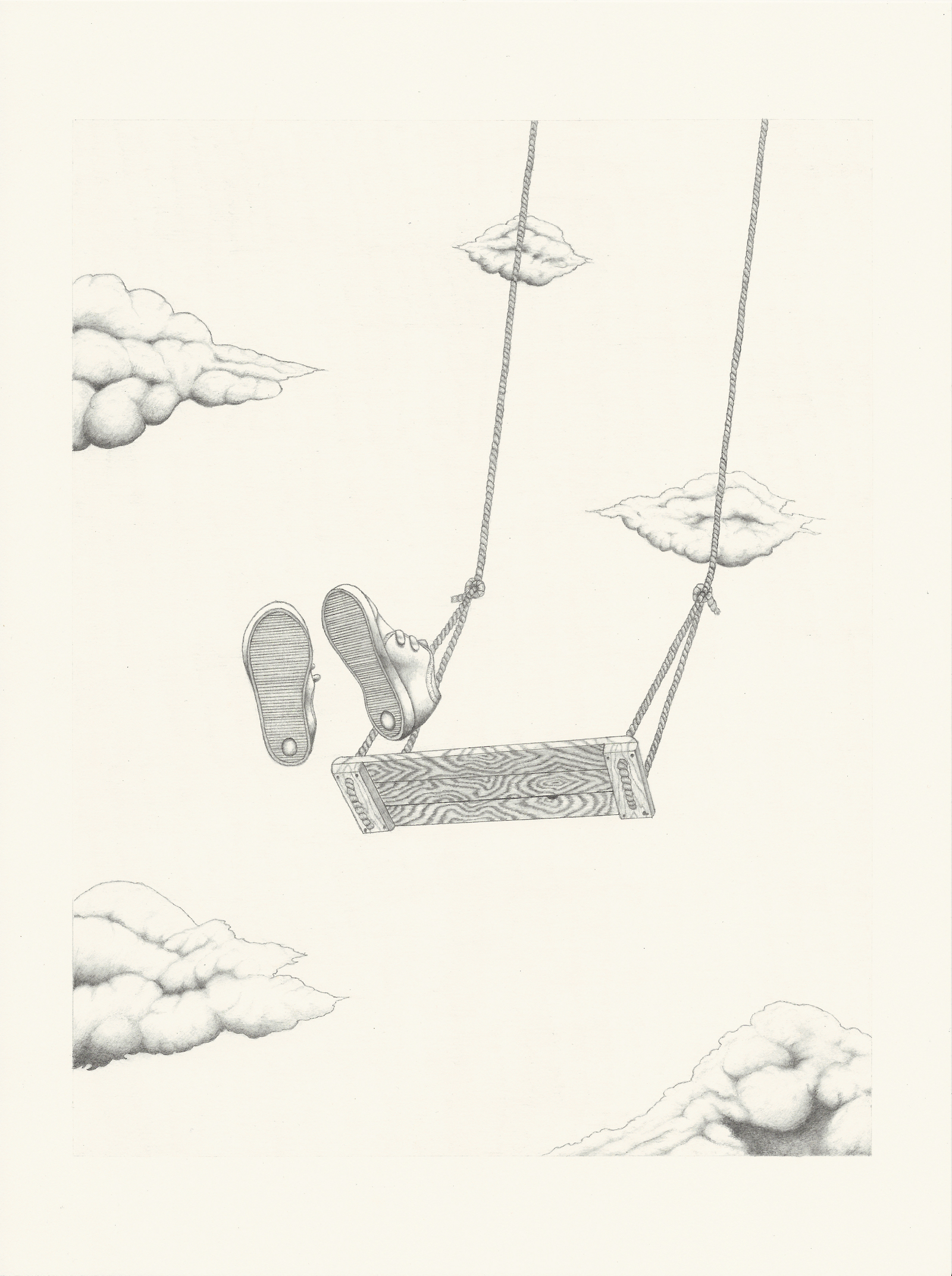
32 x 24 cm
Signed and dated at the back

32 x 24 cm
Dated and signed at the back
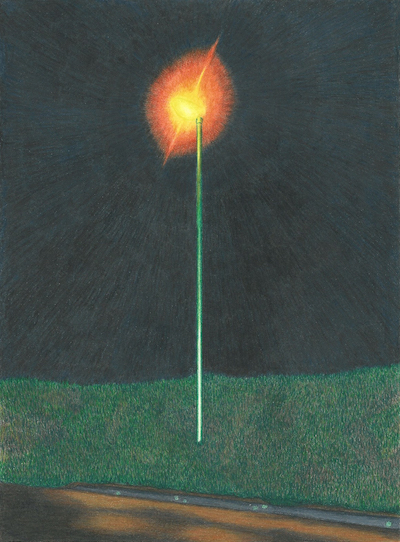
18 x 14,5 cm
Signed at the back
Le refuge is a reproduction of a photograph of a street lamp located in front of the house where Maxime Verdier grew up. In the dark night and on a deserted country road, the blazing light appears as a reassuring and warm lighthouse. The drawing is also the memory of a place where the artist liked to come and think, lying in the greasy grass at the foot of the lamp post.
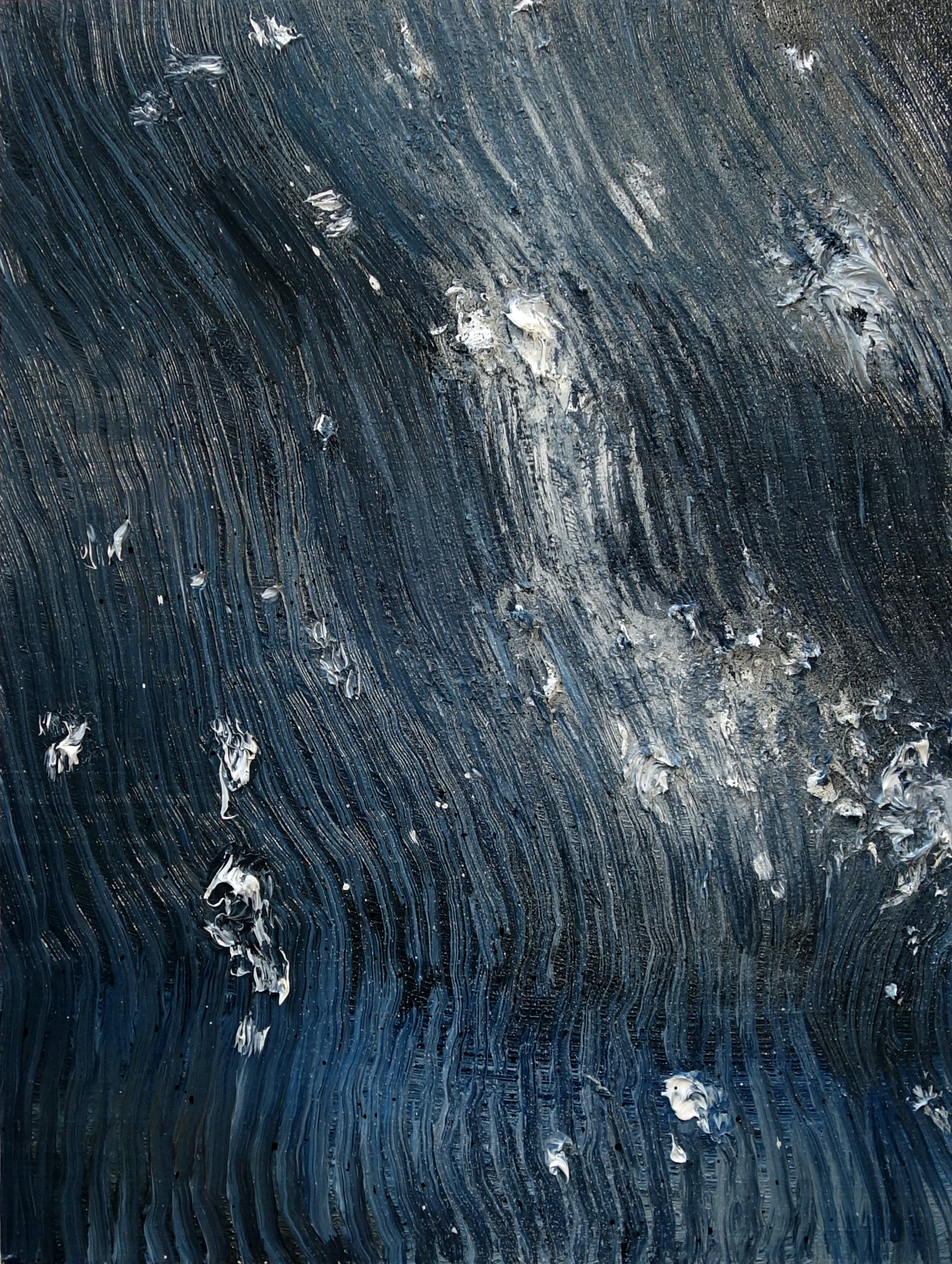
24 x 18 cm
signed and dated on the back
The source image of Sucre glace comes from a detail of a photograph of a T-shirt stained with icing sugar. The white of the sugar creates a sort of constellation on the surface of the navy blue fabric. The framing is so tight that you can make out the knits of the garment. The subject is unrecognisable and evokes at first glance the pattern of a wave. Thus the painting becomes almost abstract and its object remains deliberately enigmatic.

8,2 x 5,7 inch
Dated and signed on the back
Chourouk Hriech frequently takes inspiration during her travels. In this series, she depicts a journey in Thailand which becomes the central subject of her drawings. These artworks become a travel diary where the artist captures the essence of her subject with quick strokes, illustrating buildings, streets or objects that interested her during this journey.
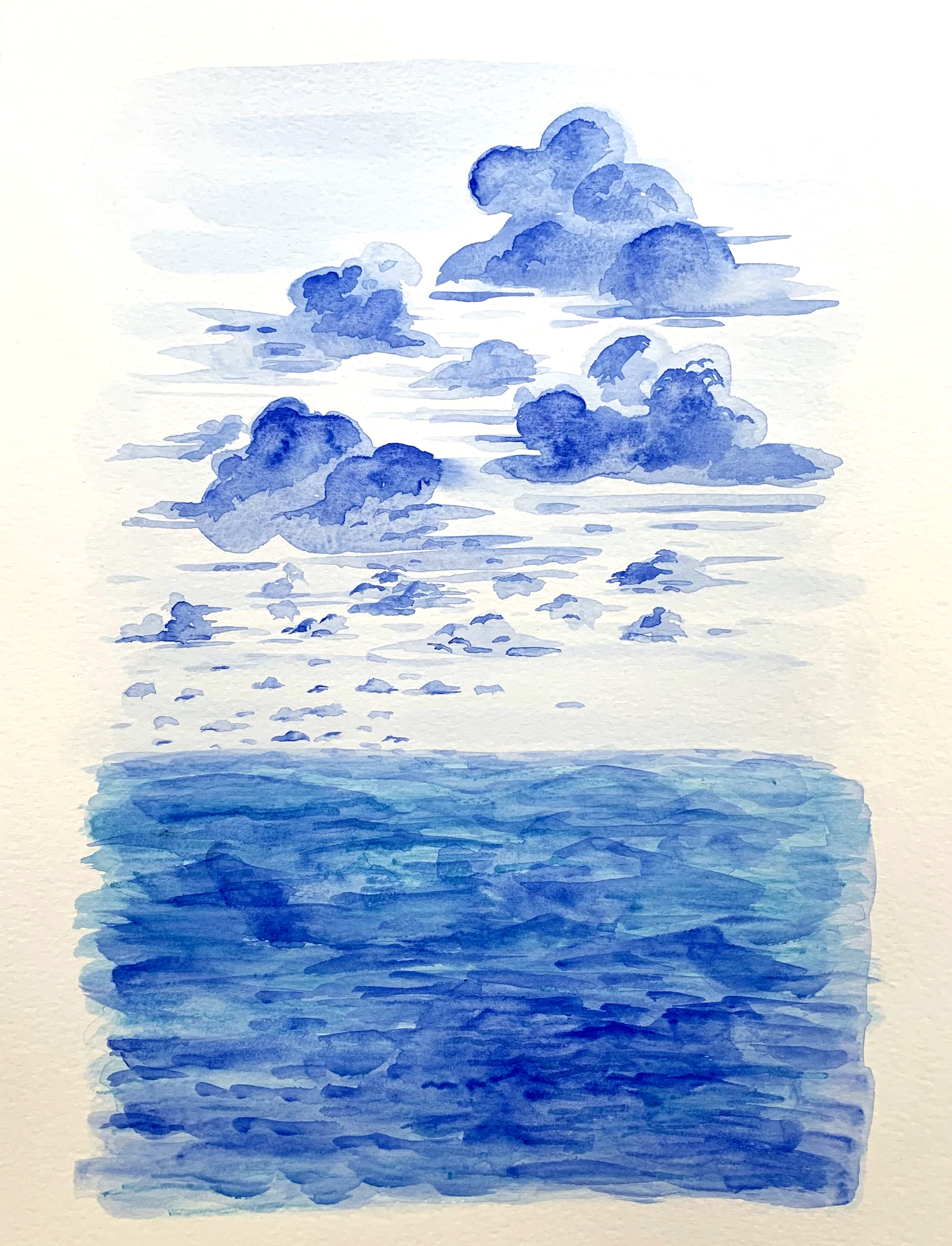
Watercolour
39,5 x 31,5 cm
Dated and signed at the back
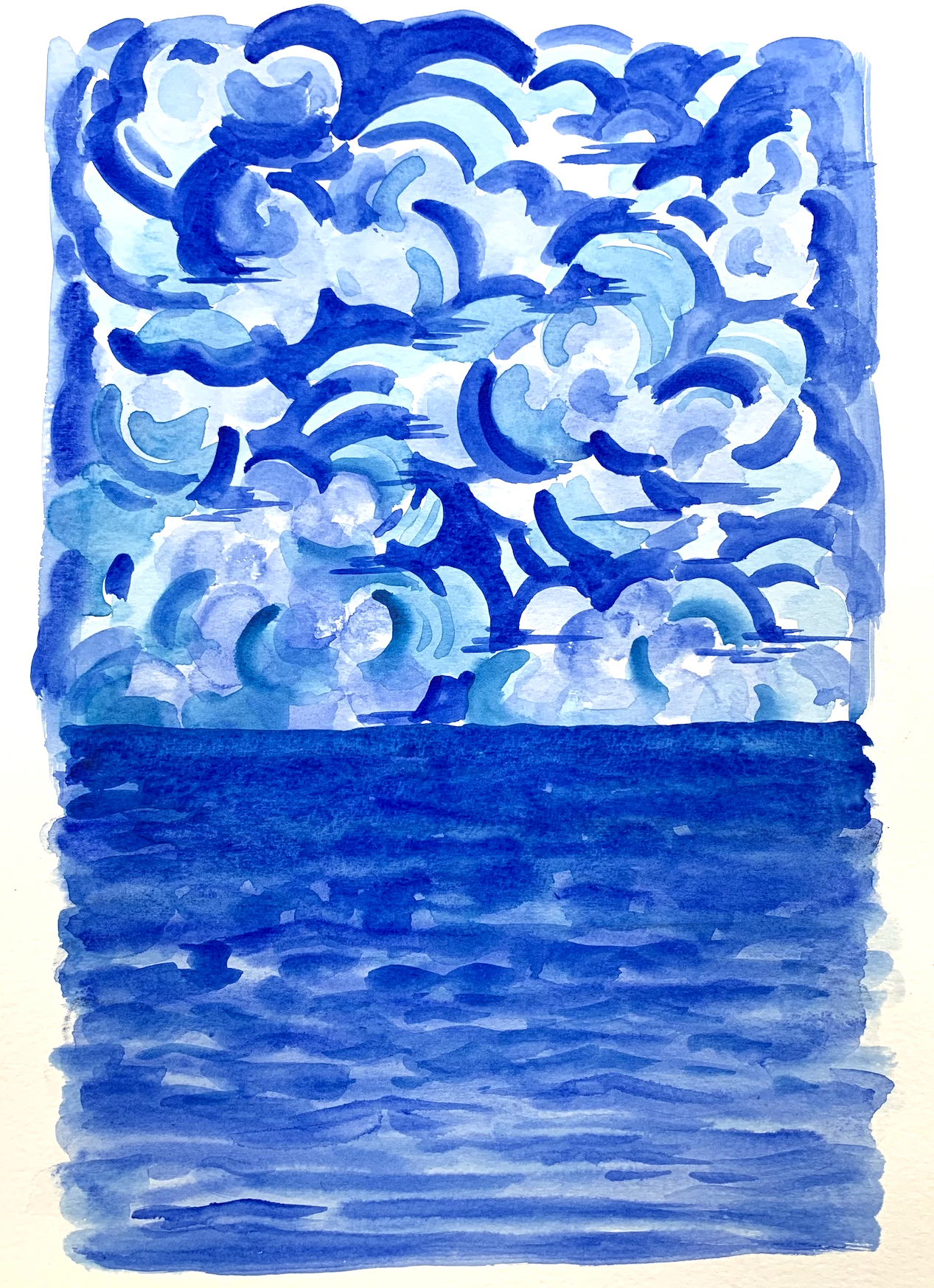
Watercolour
39,5 x 31,5 cm
Dated and signed at the back
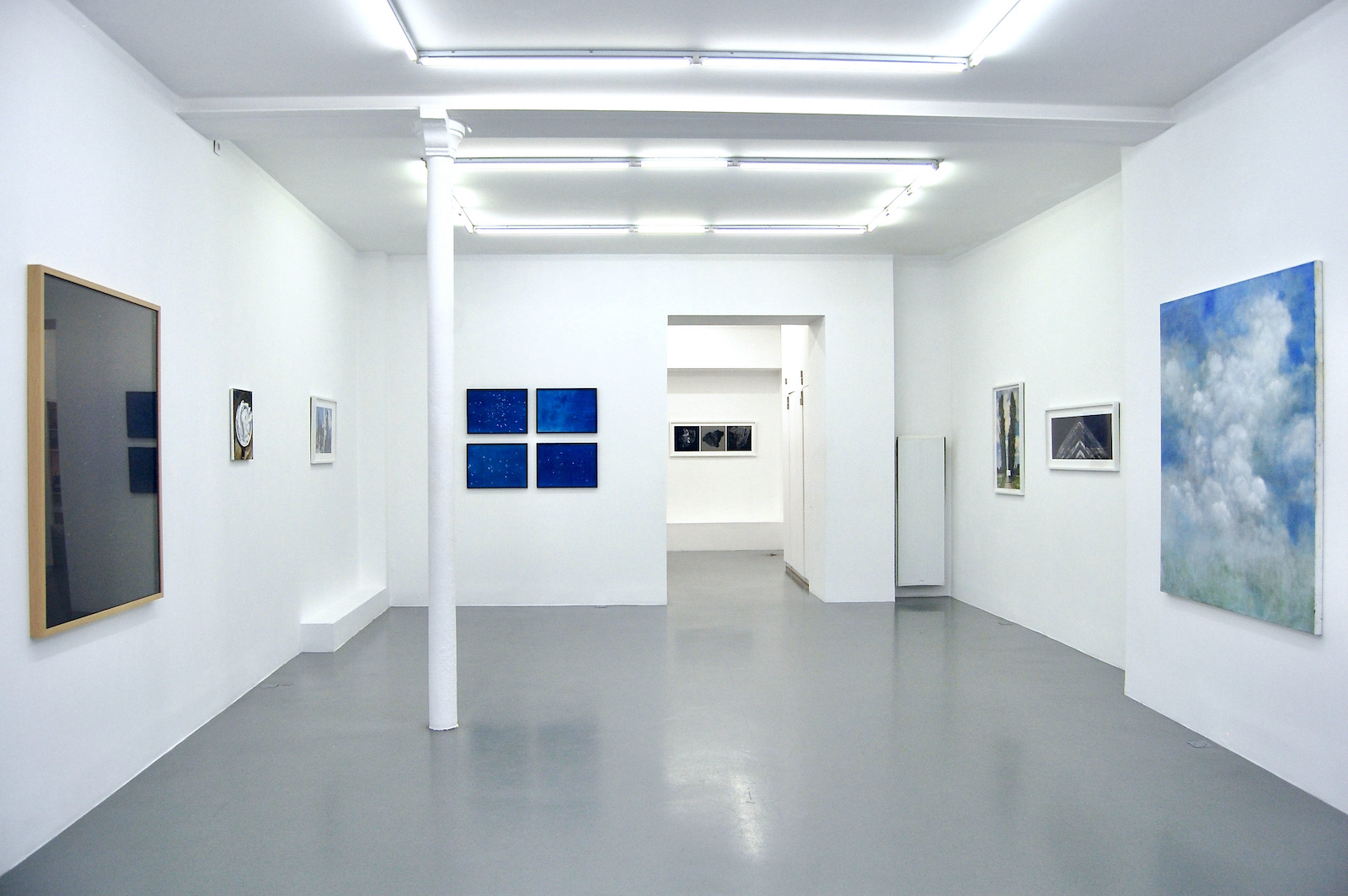
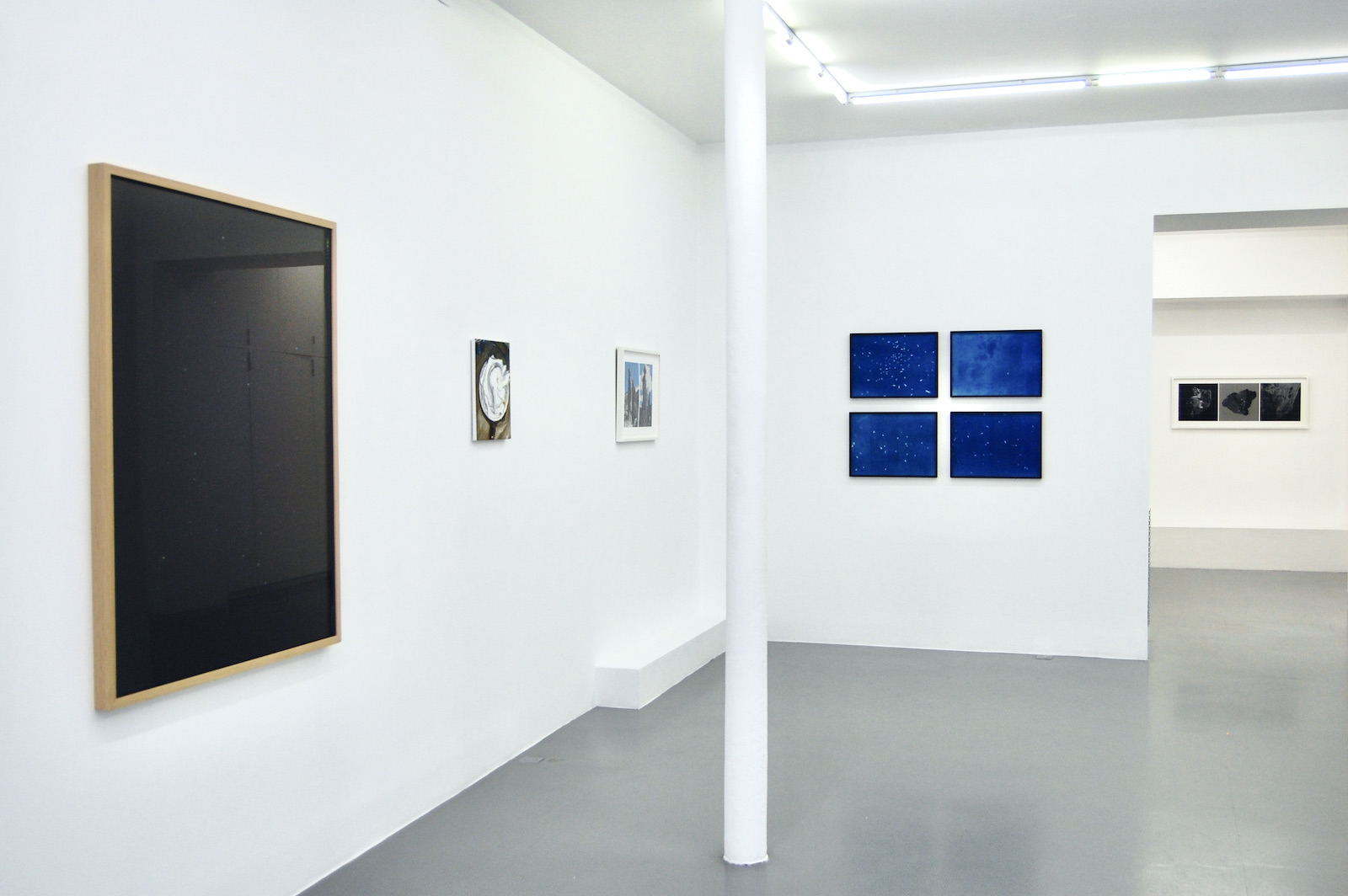
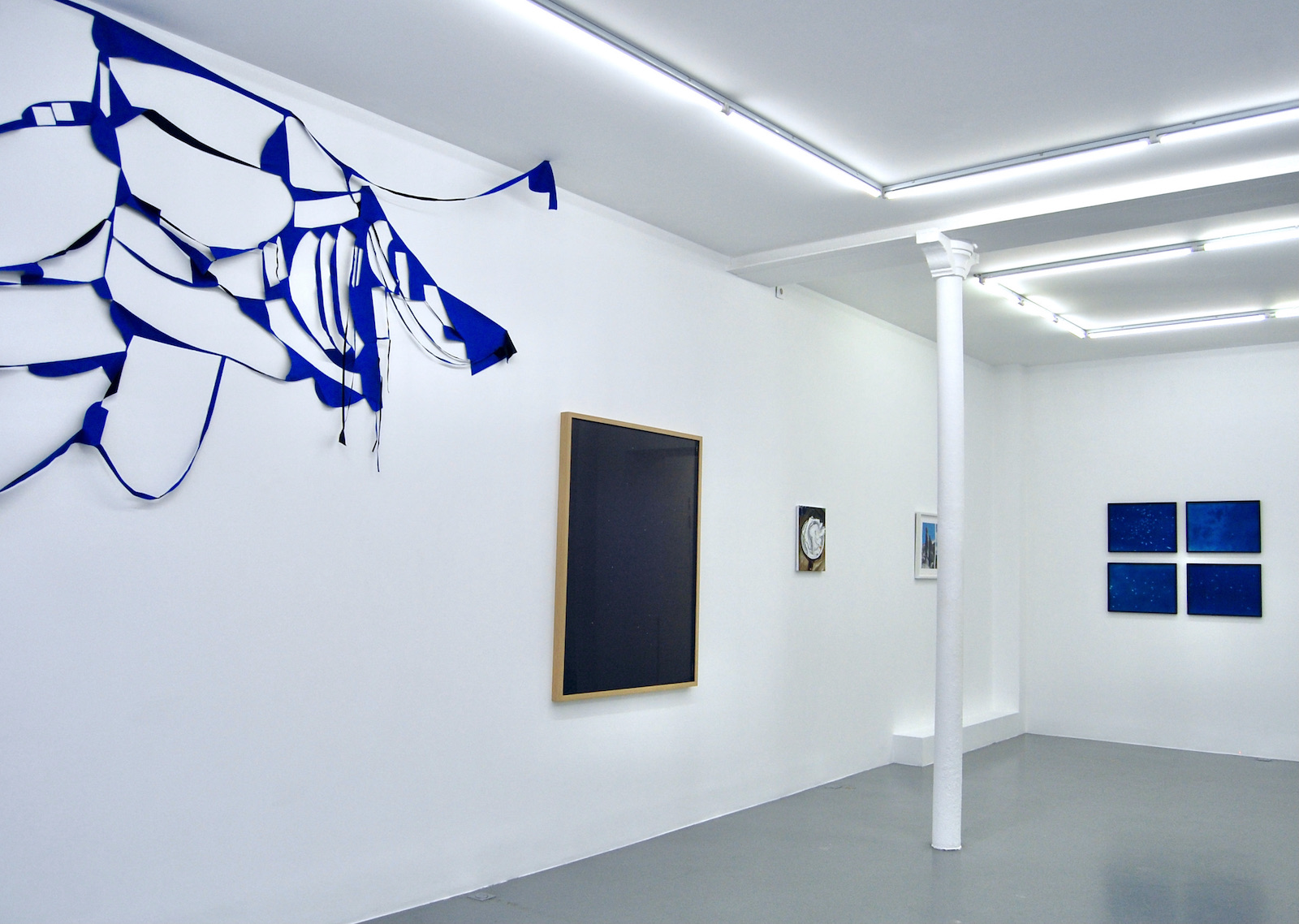
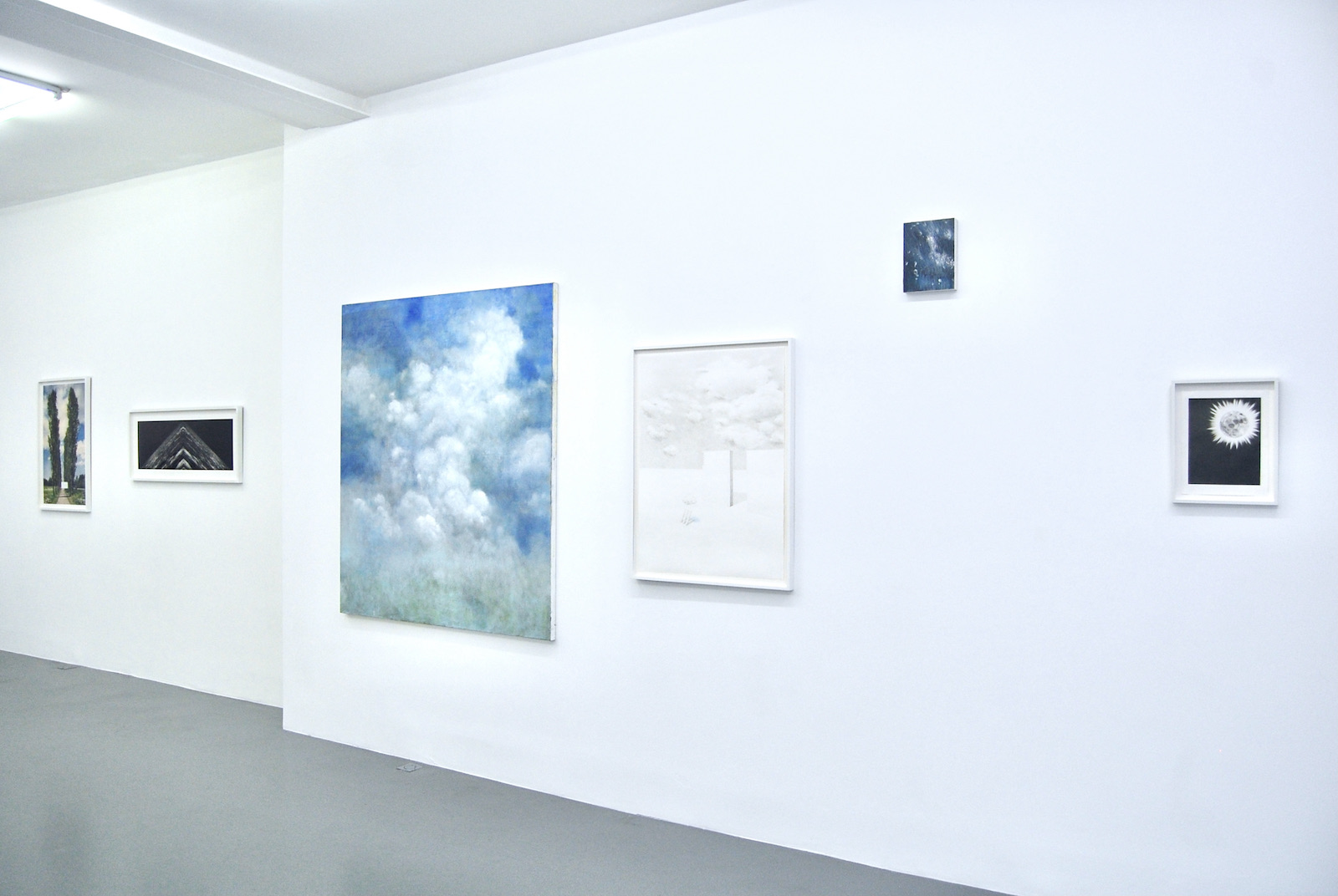
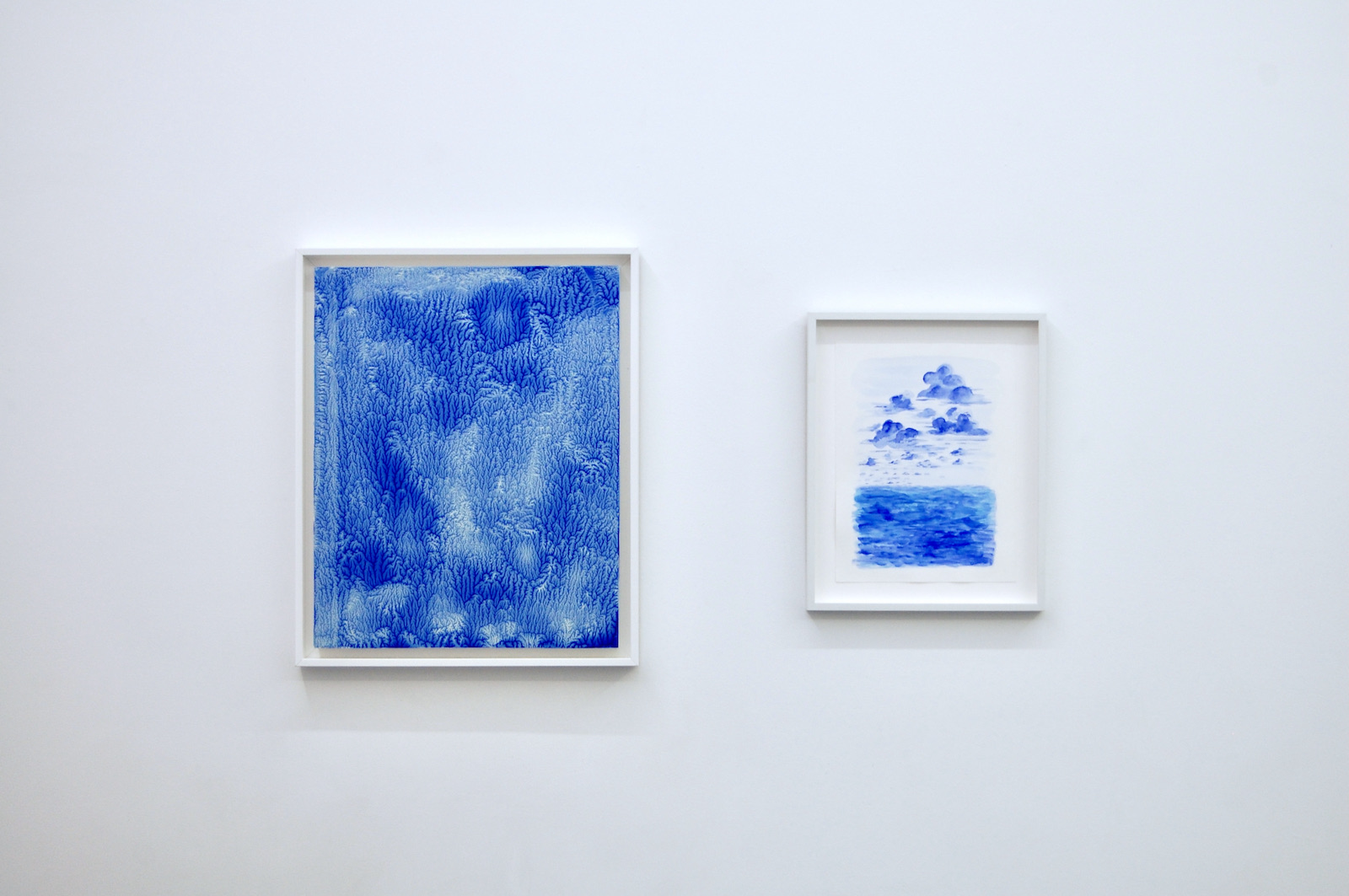
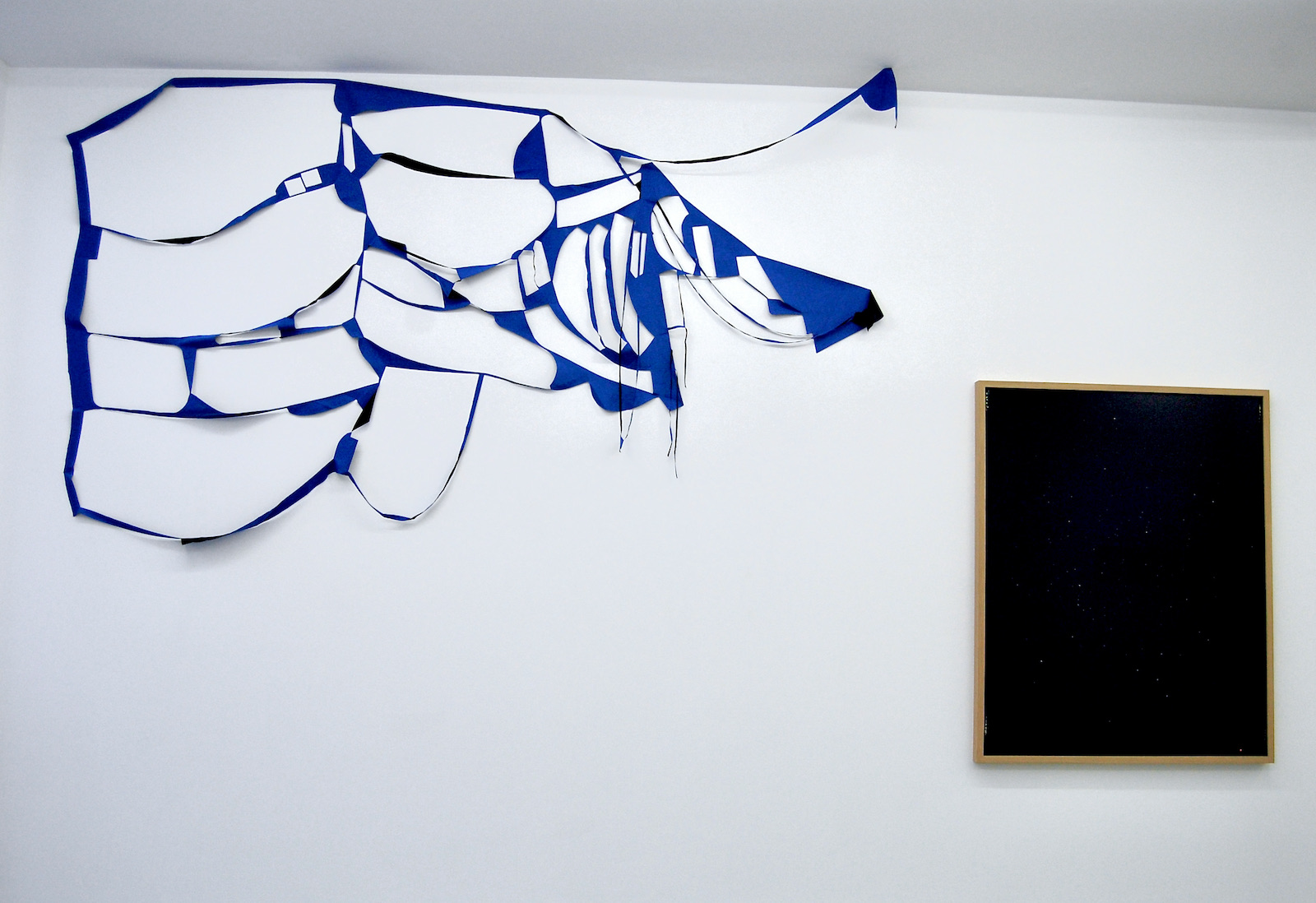

The title of this sky-themed collective exhibition is taken from Arthur Rimbaud's poem Bannières de mai.